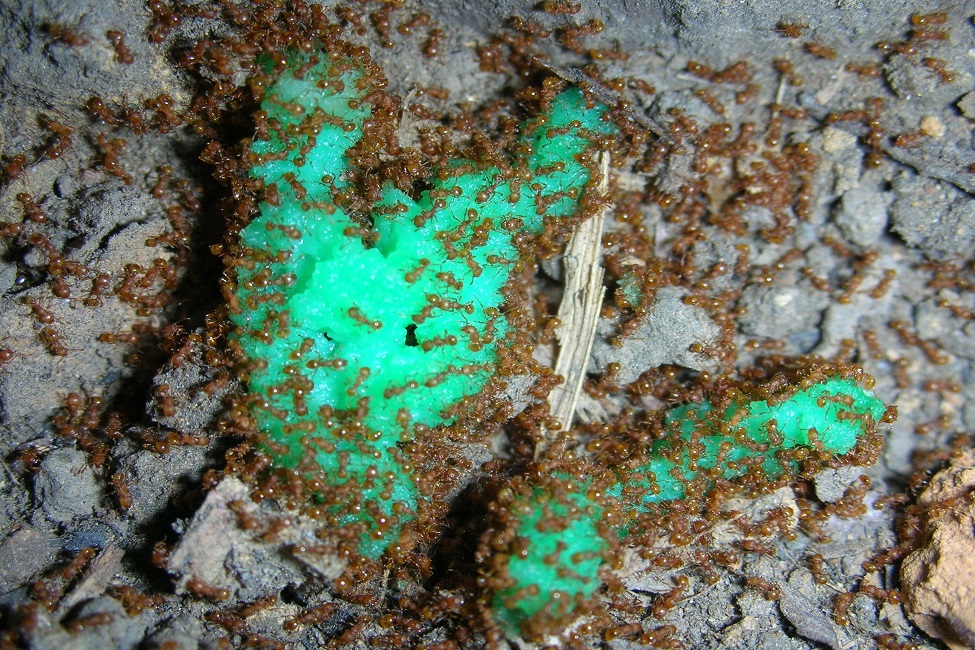Being Behind the Curve Can ‘Sting’

A little fire ant, Wasmannia auropunctata, an invasive species of a tiny but fierce ant that packs a powerful sting. (Photo credit: Eli Sarnat)
A medical condition that puzzled physicians, scientists and veterinarians, and remained obscure for decades, was long known by indigenous peoples in Colombia. The condition: Rice’s keratopathy, also called West Indian dots, and Florida spots, which causes lesions and white discoloration in the cornea of the eye. The disease was thought to be caused by viral infections, bacterial infections, and even inflammation resulting from exposure to a parasitic worm that causes river blindness.
Dating back to the 1960s, the medical community worldwide reported on this condition and their suspicions of its cause. The real culprit, however, turned out to be the little fire ant, Wasmannia auropunctata, an invasive species of a tiny but fierce ant that packs a powerful sting.
After ruling out the many potential causes of these lesions including corneal trauma and infections, researchers from Florida Atlantic University and the Pontificia Universidad Javeriana in Colombia helped to solve this mystery. They gathered knowledge on this condition from different sources and various medical fields in diverse corners of the world so that they could better inform the medical and scientific communities. Their cautionary tale? “Pay attention to other cultures as well medical fields outside of your own expertise.” Results of their study are published in a new paper in the Journal of Medical Entomology . Prior to this paper, the true cause of Rice’s keratopathy was unknown to researchers.
“I was first exposed to the serious impact of Wasmannia when I was working in the Solomon Islands in Melanesia. The locals told me that dogs rarely lived more than five years because these ants would sting their eyes, blinding them,” said James K. Wetterer, Ph.D., a professor of biology in FAU’s Harriet L. Wilkes Honors College, who co-authored the paper with Diego Rosselli, M.D., a professor in the Clinical Epidemiology and Biostatistics Department at the Pontificia Universidad Javeriana. “I told this story to a colleague and he told me that where he worked in Gabon, all the cats would go blind and were often covered with tiny red ants. It turned out to be the same ant species.”
Rosselli contacted Wetterer with information on these ants attacking local people in Colombia, and together they compiled information from diverse sources on the impact of these ants.
“We have a lot to learn from indigenous cultures. We also need to be aware of discoveries outside of our own fields,” said Wetterer.
Known from virtually every South and Central American country and major West Indian Islands, Wasmannia auropunctata is a nuisance for crops and agriculture and affects humans, domesticated animals, as well as wild animals like elephants and leopards. The ants are typically found at high densities in cacao trees and citrus orchards. In the case of agriculture, when branches are disturbed, thousands of these ants fall on workers. The sting results when a human or animal blinks in response to the presence of the ant. The ant has spread through human commerce and has reached many parts of the world including Florida, Australia, Africa, Israel, and many Pacific islands, including Papua New Guinea, Hawaii, the Solomon Islands, and the Galapagos.
Rice’s keratopathy is named after Noel Rice, who in 1968, noticed the lesions in immigrants from the West Indies in London. He concluded that the condition was due to trauma to the eye. Keratopathy of this type was reported in cats in Florida in 1979 and in dogs in Brazil in 1997. In 2004, these corneal lesions were reported in cats and dogs in Martinique, but only in those animals living outdoors.
Wetterer and Rosselli note that next steps in research should involve looking at the chemistry of the toxin produced by Wasmannia auropunctata. As far as controlling its spread, the researchers caution that it is problematic because the ant is a “tramp species,” spreading throughout the world through human commerce. They recommend that in addition to the conventional methods used such as insecticides, increased inspections of agricultural products as well as quarantines of products infested with the little fire ant could be useful ways to control this intrusive species.
-FAU-
Tags: honors | research | science | faculty and staff | jupiter